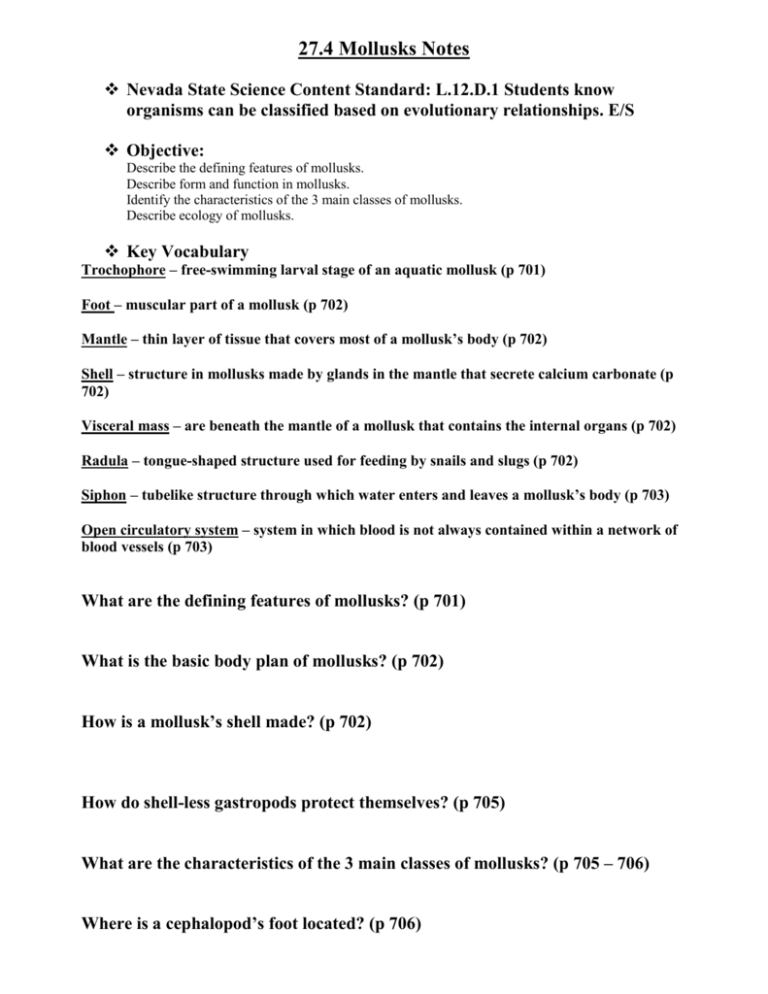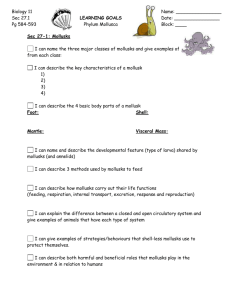Mollusks
advertisement

27.4 Mollusks Notes Nevada State Science Content Standard: L.12.D.1 Students know organisms can be classified based on evolutionary relationships. E/S Objective: Describe the defining features of mollusks. Describe form and function in mollusks. Identify the characteristics of the 3 main classes of mollusks. Describe ecology of mollusks. Key Vocabulary Trochophore – free-swimming larval stage of an aquatic mollusk (p 701) Foot – muscular part of a mollusk (p 702) Mantle – thin layer of tissue that covers most of a mollusk’s body (p 702) Shell – structure in mollusks made by glands in the mantle that secrete calcium carbonate (p 702) Visceral mass – are beneath the mantle of a mollusk that contains the internal organs (p 702) Radula – tongue-shaped structure used for feeding by snails and slugs (p 702) Siphon – tubelike structure through which water enters and leaves a mollusk’s body (p 703) Open circulatory system – system in which blood is not always contained within a network of blood vessels (p 703) What are the defining features of mollusks? (p 701) What is the basic body plan of mollusks? (p 702) How is a mollusk’s shell made? (p 702) How do shell-less gastropods protect themselves? (p 705) What are the characteristics of the 3 main classes of mollusks? (p 705 – 706) Where is a cephalopod’s foot located? (p 706) Why are land snails restricted to moist environments? (p 703) Describe how a cephalopod responds to external stimuli and explain how a cephalopod’s nervous system is more complex than that of other mollusks. (p 707)











